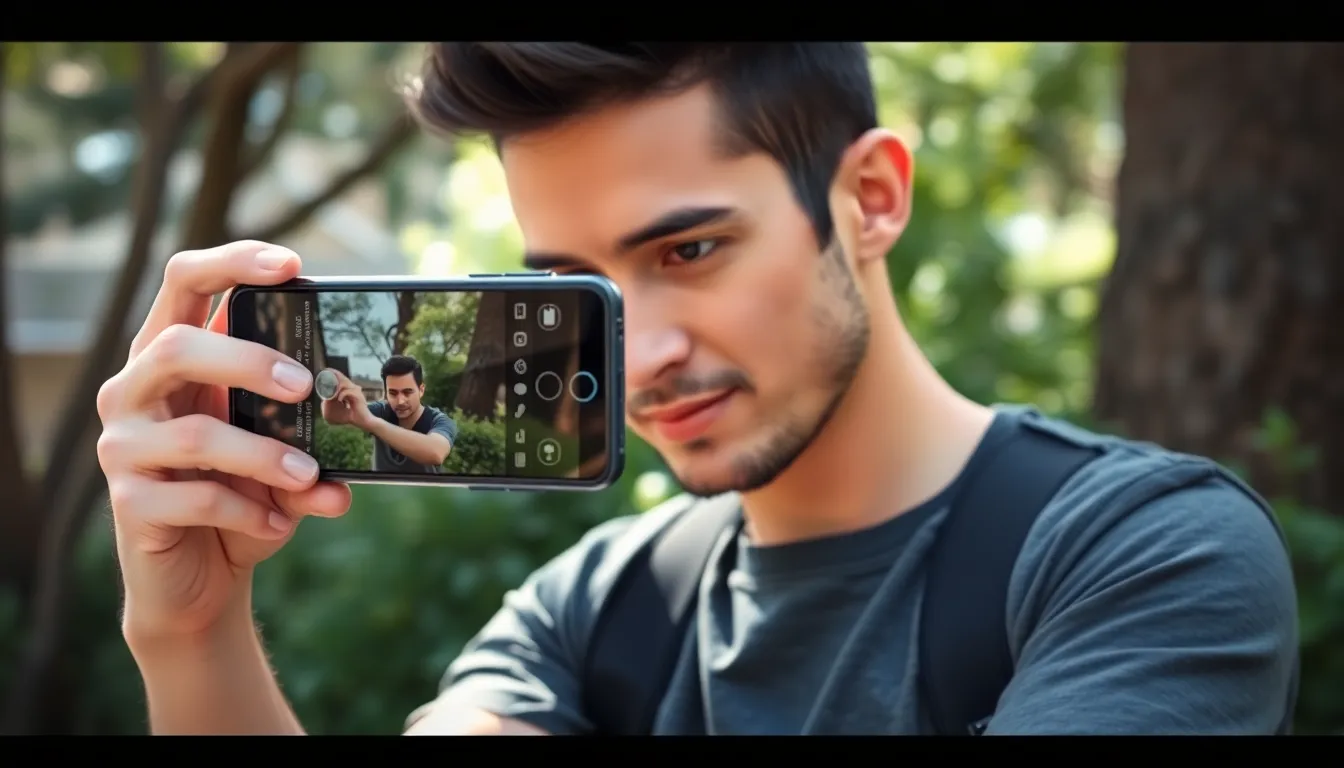Smartphones have transformed everyone into a budding photographer, whether they like it or not. With just a tap, anyone can capture moments that range from breathtaking sunsets to that perfectly staged avocado toast. But let’s face it, not every shot deserves a spot on the fridge.
Table of Contents
ToggleEssential Smartphone Photography Tips
Mastering smartphone photography requires attention to detail and understanding of key techniques. Focus on lighting, as natural light enhances image quality significantly. Utilize the golden hour, which occurs shortly after sunrise and before sunset, for softer and warmer tones.
Stabilizing the phone improves clarity. Hold the device with both hands or use a tripod to minimize shake. Encourage a firm grip to avoid blurry images, especially in low-light conditions.
Experiment with composition techniques. The rule of thirds suggests positioning the subject along imaginary lines that divide the image into thirds, both horizontally and vertically. Capture multiple angles to find the most flattering perspective.
Use editing apps to refine images post-capture. Adjust brightness, contrast, saturation, and sharpness with tools like Snapseed or Lightroom Mobile. These alterations enhance photos without compromising quality.
Consider framing subjects creatively. Incorporate natural frames such as doors, windows, or branches to lead the viewer’s eye. Add elements in the foreground to create depth and interest.
Explore different modes available on smartphones. Try portrait mode for professional-looking images with a blurred background. Experiment with night mode for improved performance in low-light environments.
Keep the lens clean to ensure clear images. Dirt, smudges, or water spots distort photographs and lead to disappointing results. Wipe the lens gently with a microfiber cloth whenever necessary.
Lastly, don’t hesitate to practice regularly. Frequent shooting enhances skills, builds confidence, and fosters creativity in capturing stunning images.
Understanding Your Smartphone Camera

Understanding the smartphone camera’s features enhances the photography experience significantly. Users can unlock the full potential of their devices by familiarizing themselves with various settings and modes.
Camera Settings Overview
Smartphones often include settings that personalize the photography experience. Users can adjust options such as exposure, focus, and ISO to achieve desired effects. Exploring settings like HDR can improve dynamic range in high-contrast scenes. Experimenting with white balance helps accurately capture colors under different lighting conditions. Many devices feature grid lines to assist with composition, guiding users in framing shots effectively.
Lenses and Accessories
Smartphone lenses offer versatility in photography. Some phones come with multiple built-in lenses, including wide-angle and telephoto options, catering to varying shooting styles. Attachable lenses provide additional capabilities, enhancing creativity. Filters and tripod mounts can stabilize photos, ensuring sharpness in every shot. Understanding how to use these accessories expands the range of possible photographs, making each image more dynamic and engaging.
Composition Techniques
Effective composition techniques enhance smartphone photography. Implementing these strategies elevates pictures, making them visually appealing.
Rule of Thirds
Applying the rule of thirds creates balanced images. By dividing the frame into a tic-tac-toe grid, important elements can align along the lines or at their intersections. This method draws the viewer’s attention and adds depth. For instance, positioning a subject off-center often results in a more engaging photo. Many photographers use grid overlays available in smartphone camera settings to aid this process. Practicing this rule leads to impactful compositions.
Leading Lines and Framing
Utilizing leading lines guides the viewer’s eye through the image. Natural lines, such as roads, bridges, or rivers, encourage exploration within the photo. Creatively framing subjects enhances their prominence and adds context. For example, employing doorways, windows, or branches can create a unique perspective. Combining these techniques results in photographs that tell compelling stories. Consistently experimenting with leading lines and framing techniques strengthens composition skills.
Lighting Tips for Stunning Photos
Lighting plays a crucial role in smartphone photography. Understanding how to leverage natural and artificial light can significantly enhance the quality of images.
Natural Light vs. Artificial Light
Natural light tends to create softer, more appealing images. Utilizing sunlight can add warmth and clarity, especially when photographing outdoors. Cloudy days provide diffused light, reducing harsh shadows. In contrast, artificial light sources can produce unique effects but often result in flat images. Fluorescent lighting may cast an unflattering green tint, while incandescent bulbs deliver a warm tone. Experimenting with different light sources helps photographers identify which best suits their style. Positioning a subject near windows or using light reflectors can optimize natural light and improve results.
Golden Hour Photography
Golden hour refers to the period shortly after sunrise or before sunset. During this time, the sun emits a softer, warmer light. Photographers often achieve vibrant colors and reduced shadows, creating stunning images. The light appears golden, enhancing skin tones and landscapes. Capturing subjects during golden hour can transform ordinary photos into breathtaking memories. Planning outdoor shoots around this timeframe enables photographers to take advantage of the ideal conditions. Checking local sunrise and sunset times aids in scheduling shoots effectively, ensuring optimal light is available when needed.
Editing Your Photos
Editing enhances smartphone photos, making them more appealing. Using the right tools simplifies this process.
Choosing the Right Editing App
Selecting an editing app plays a crucial role in enhancing photographs. Popular options include Adobe Lightroom Mobile, Snapseed, and VSCO. Each app offers unique features, such as filters, adjusting lighting, and fine-tuning colors. Some apps cater to beginners with user-friendly interfaces, while others provide advanced tools for experienced users. Users should consider their editing needs and choose an app that aligns with their skill level.
Basic Editing Techniques
Applying basic editing techniques can significantly improve photos. Adjusting brightness and contrast enhances visibility and depth. Cropping the image helps to focus on the subject, eliminating distractions. Users can also tweak saturation levels to make colors pop or appear more muted. Sharpening images clarifies details, resulting in crisper photos. Finally, using filters can add artistic flair but should be applied sparingly to maintain authenticity.
Mastering smartphone photography opens up a world of creative possibilities. By understanding lighting techniques and utilizing various camera features, anyone can elevate their photography skills. Regular practice and experimentation with composition can turn everyday moments into stunning visuals.
The right editing tools can further enhance the quality of images, ensuring they stand out. With a bit of dedication and creativity, smartphone users can capture breathtaking photos that tell compelling stories. Embracing these tips will not only improve their photography but also instill a newfound confidence in their artistic abilities.



